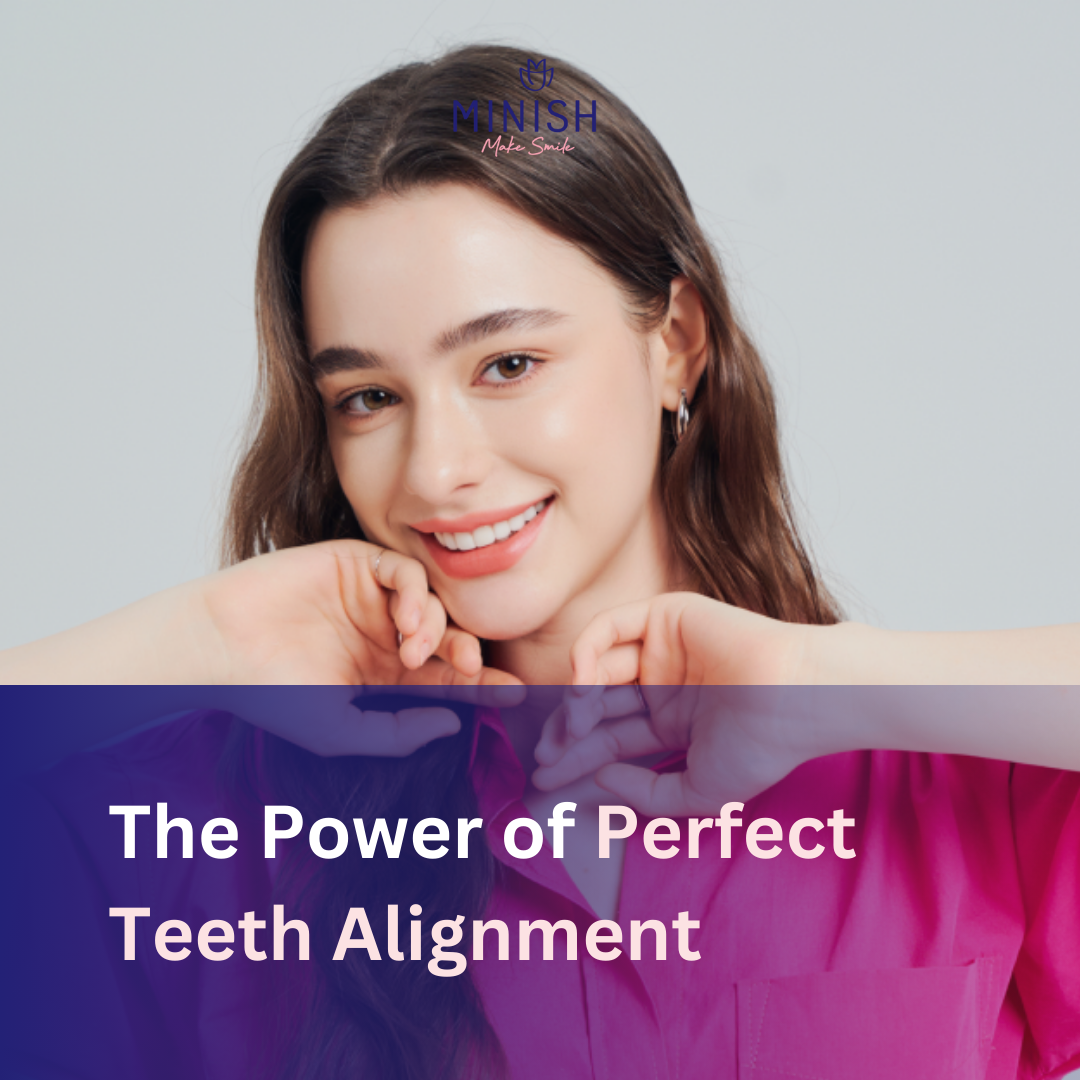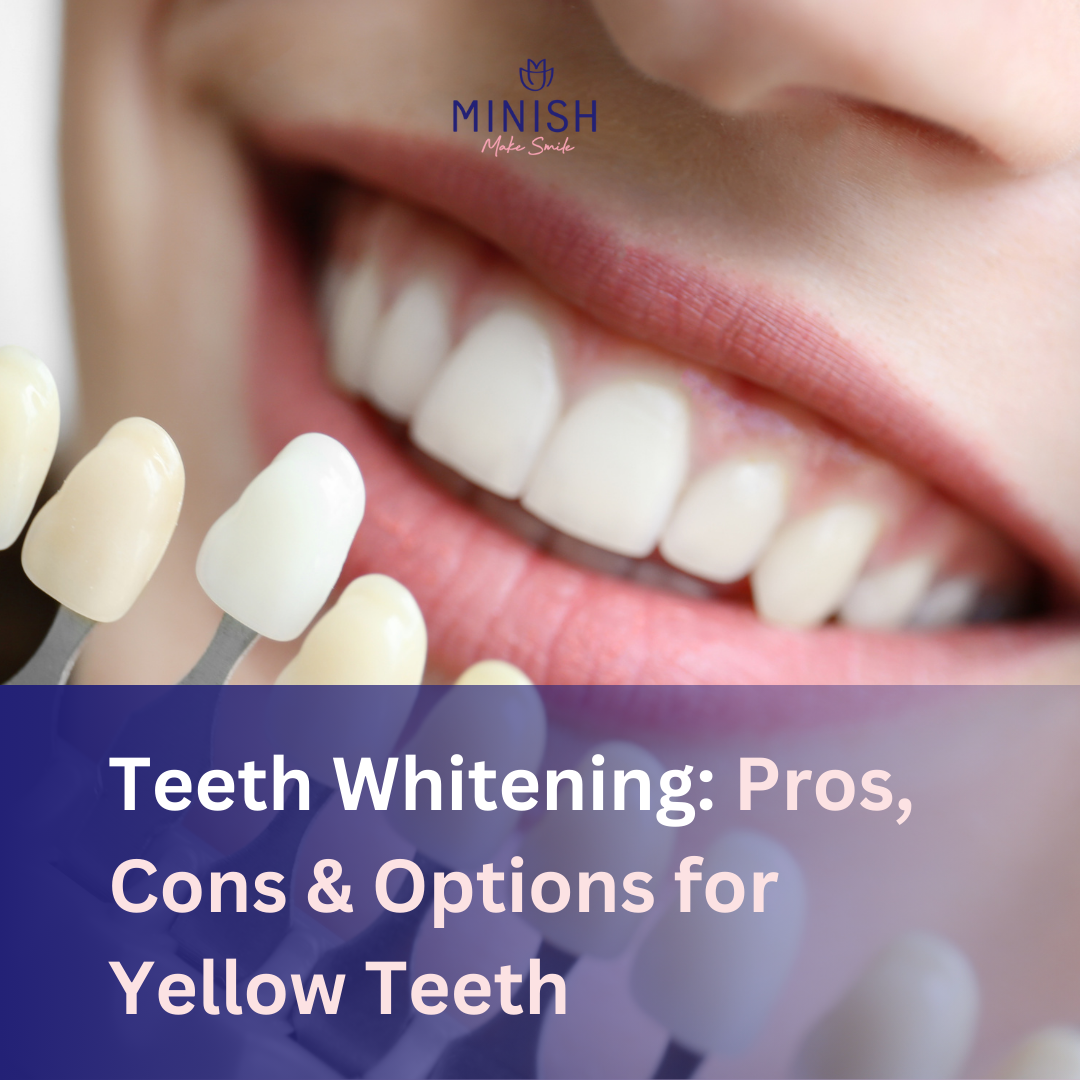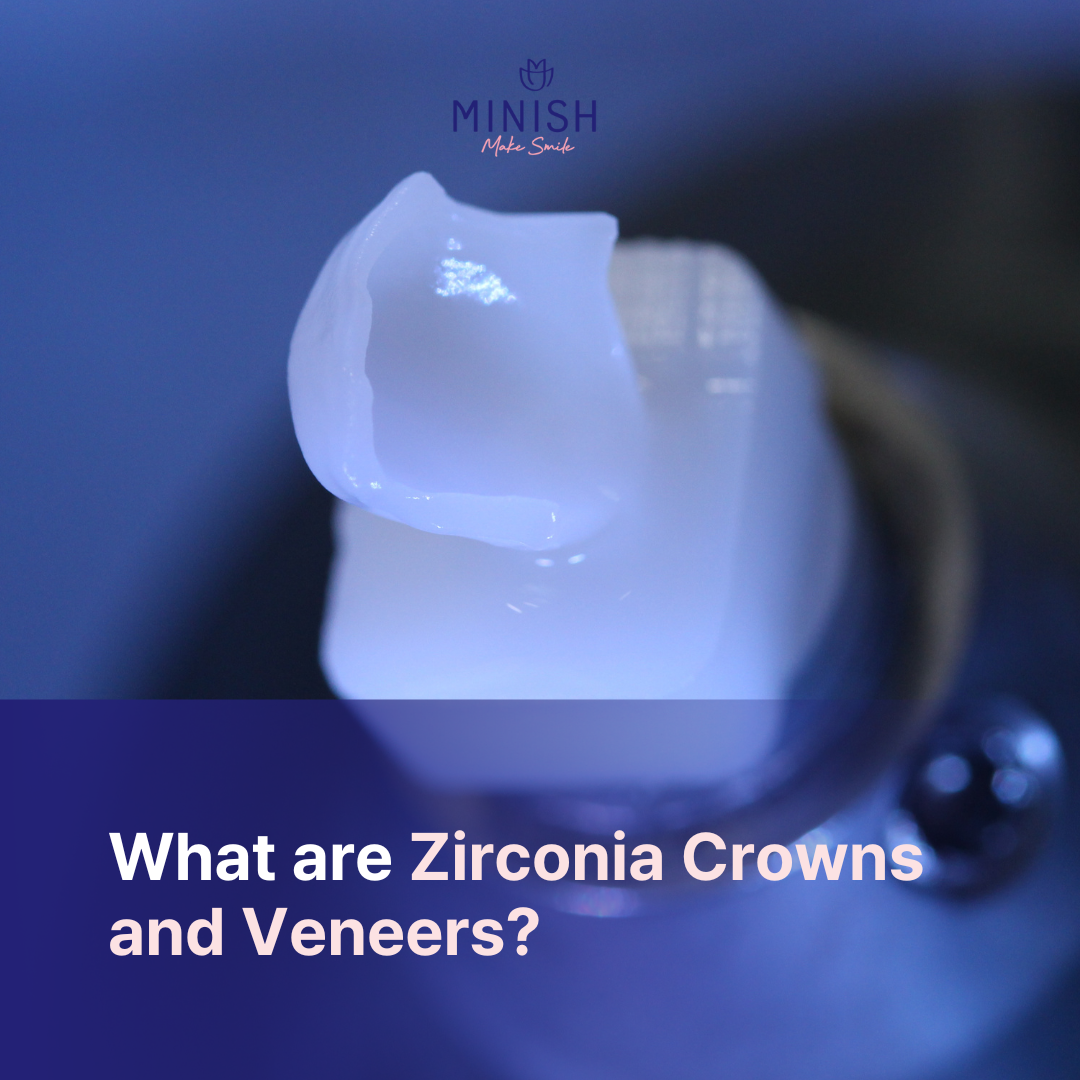Veneers, Lumineers, or MINISH Veneers: Which Is Best?

Veneers are one of the most popular cosmetic dental treatments for enhancing the appearance of teeth—especially for patients with worn, chipped, or otherwise damaged enamel. Initially limited in variety, dental veneers have evolved into a range of types thanks to advances in dental materials and technology, leading to ultra-thin systems like Lumineers and MINISH Veneers.
These next-generation veneers have gained popularity for their minimal-prep approach, natural-looking results, and less invasive treatment—making them ideal for restoring damaged teeth with minimal removal of healthy structure. But how do these options compare in terms of durability, aesthetics, and biological compatibility? This blog explores traditional veneers vs. Lumineers and introduces the innovative, full-coverage solution offered by MINISH Veneers, helping both dental professionals and patients find the best fit for long-term success.
Veneer vs Lumineers vs MINISH Veneers – Understanding Basics
Traditionally, porcelain veneers were the only option offered in most dental clinics, requiring significant tooth reduction (0.3 to 0.7 mm) and multiple appointments. These veneers deliver dramatic results, but the cost, discomfort, and invasiveness have led many patients—especially those with minor damage— to seek gentler alternatives, including composite resin veneers.
The rise of ultra-thin veneers introduced options like Lumineers, known for their no-prep design. Manufactured by DenMat, Lumineers allow for broader application cases in veneer placement. However, this mass-produced lab approach can result in veneers that feel bulky or unnatural—sometimes requiring a full remake. Additionally, the strength and thickness provided by Lumineers can contribute to wear on opposing teeth.
MINISH Veneers reflect the next generation of cosmetic dentistry. Developed in Korea and engineered with biomimetic ceramic materials, they strike a clinical balance: ultra-thin, minimally invasive, and biologically harmonious with the patient’s natural teeth. Rather than skipping preparation entirely, MINISH Veneers emphasizes guided minimal prep to ensure bonding strength, long-term durability, comfort, and natural-looking aesthetics—merging the best of both traditional and modern veneer techniques.
Key Characteristics of Popular Thin Veneers
3.1. What Are Porcelain Veneers?
Porcelain veneers are one of the primary types of veneers available and involve significant enamel reduction—typically between 0.5 and 0.7 mm per tooth. Because of this, some patients require local or even sleep sedation during the procedure. The preparation often includes physical impressions and temporary veneers while waiting for the final set. Importantly, once placed, this process is irreversible.
This level of preparation allows porcelain veneers to offer the most dramatic aesthetic improvements. Being thicker than ultra-thin options, they are especially effective at masking dark stains, reshaping misaligned teeth, and creating a more uniform smile.
3.2. What Are Lumineers?
Lumineers are ultra-thin veneers made from Cerinate, a leucite-reinforced ceramic developed by DenMat Lab. They mainly appeal because they allow placing veneers without shaving down the natural tooth. This minimizes discomfort and speeds up treatment.
While Lumineers are custom-made, their minimal-prep design can sometimes lead to aesthetic compromises. Some patients report that they feel bulky or appear unnatural. Additionally, their stiffness can cause increased wear on the opposing teeth over time. Though often marked as reversible, Lumineers may still require some enamel removal because of their high bond strength.
3.3. What Are MINISH Veneers?
MINISH Veneers focuses on protecting natural tooth structure while providing advanced cosmetic solutions. Using proprietary MINISH Blocs, created in collaboration with German dental manufacturer VITA, these veneers closely mimic the strength and wear characteristics of natural enamel, enabling full chemical bonding to the tooth surface and physiological aging over time.
The result is a next-generation veneer system that’s ultra-thin (0.1–0.2 mm) yet avoids the weaknesses of no-prep systems. MINISH Veneers does not advocate non-prep placement; instead, it focuses on conservative, minimally invasive tooth preparation to enhance bonding and case longevity. These veneers are available exclusively through certified providers trained in the MINISH Integration Program, ensuring consistent results and high patient satisfaction.
Ultra-thin veneers like Lumineers and MINISH Veneers typically require fewer appointments than traditional porcelain veneers. Since they often eliminate the need for impressions and temporaries, patients can complete treatment in as few as one visit.
👉 Explore the MINISH Course Program
Quick Comparison: Veneers vs Lumineers vs MINISH Veneers
| Porcelain Veneers | Lumineers | MINISH Veneers | |
| Material | Feldspathic or lithium disilicate ceramic | Cerinate (Leucite-based ceramic) | Biomimetic feldspathic ceramic (MINISH Blocs) |
| Thickness | Typically 0.5–0.7 mm | ~0.2–0.5 mm | ~0.1–0.2 mm |
| Strength | Strong, but relies on thickness | May wear opposing teeth | Strong yet enamel-friendly |
| Treatment Process | Typically requires 3 or more visits | Often completed in up to 2 visits, minimal prep | Typically completed in 2 visits with guided minimal prep |
| Aesthetic Effect | Most dramatic | Can appear bulky | Seamless, enamel-like |
| Availability | Most dental clinics | Widely available | Only through certified MINISH Providers |
| Cost | $$$ Most expensive due to added costs from impressions, temporaries and sedation | $$ Lower cost due to minimal prep | $$ Similar to Lumineers; varies by provider |
Best Candidates for Veneers, Lumineers, and MINISH Veneers
Patients with minor cosmetic issues such as small gaps, worn edges, or light discoloration are typically good candidates for both Lumineers and MINISH Veneers. Both options are more conservative than traditional veneers and preserve healthy enamel.
MINISH Veneers, offered through certified providers including specialists at MINISH Dental Hospital, are ideal for patients seeking natural esthetics with guided preparation and long-term reliability. These cosmetic dentists follow standardized clinical protocols to deliver more predictable and consistent outcomes. MINISH Veneers are especially beneficial for younger patients or those with thinner enamel, where aggressive preparation could cause more harm than good.
Patients with major aesthetic issues—such as deep stains or significant tooth reshaping needs—may benefit more from traditional porcelain veneers.
How to Practice Veneers for Your Patients
As patients increasingly seek conservative cosmetic treatments, veneers have become essential in modern practice. Dentists looking to improve their esthetic outcomes are turning to advanced training, state-of-the-art digital workflows, and refined techniques such as guided tooth shaving for minimal enamel removal.
The MINISH Veneers Integration Program includes hands-on training, mentorship, and access to a proprietary digital lab. Certified dentists gain marketing support, consistent fabrication quality, and membership in a growing network of providers dedicated to delivering predictable, high-quality results.
👉 Ready to advance your veneer practice? Explore the MINISH Course
Veneer Cost Breakdown: Porcelain, Lumineers, and MINISH Veneers
Porcelain Veneers – $$$ (Premium)
Average Price per Tooth: $1,200–$4,000 (some ranges as low as $925, depending on region or provider)
Porcelain veneers are typically the most expensive due to multi-step preparation, temporaries, often sedation, and significant tooth shaving. While they offer dramatic aesthetic results, the invasiveness and cost can be drawbacks.
Lumineers – $$ (Moderate)
Average Price per Tooth: $800–$2,500
Lumineers are more affordable with their simplified no-prep process, eliminating tooth shaving altogether. However, this convenience comes with pros and cons—while less invasive, they may not suit all cases and can sometimes result in bulkier restorations.
MINISH Veneers – $$ to $$$ (Mid to Premium)
Average Price per Tooth: depending on case complexity and providers
MINISH Veneers cost about the same as Lumineers but provide the added value of certified providers, customized guided prep with minimal tooth shaving, and state-of-the-art digital production. This combination ensures enhanced longevity, natural esthetics, and a balanced approach between invasiveness and durability.
Treatment planning starts with a thorough evaluation of each patient’s clinical presentation and aesthetic goals. By aligning these factors, you can determine the most suitable veneer solution—whether traditional porcelain, Lumineers, or MINISH Veneers—each with its own clinical indications, advantages, and limitations based on the patient’s needs and long-term treatment objectives.
Frequently Asked Questions—Veneers vs Lumineers vs MINISH Veneers
1. Are Lumineers better than veneers?
Lumineers are ultra-thin and require little to no enamel removal, which makes them a more conservative option. However, porcelain veneers often provide stronger correction and a more customized fit. The better choice depends on your specific case and cosmetic goals.
2. How long do Lumineers last?
With appropriate maintenance, Lumineers have a lifespan of 10 to 20 years. Longevity depends on hygiene, bite alignment, and lifestyle.
3. What’s the difference between veneers and Lumineers?
Veneers require more tooth prep but deliver stronger corrections. Lumineers are conservative and reversible but not ideal for severe cases.
4. Are ultra-thin veneers better than traditional veneers?
Ultra-thin veneers preserve enamel, making them ideal for minor corrections. Traditional veneers are better for major shape or color adjustments.
5. Are no-prep veneers better than traditional veneers?
No-prep veneers like Lumineers can sometimes be reversible. However, rigid materials like Cerinate can require dentists to remove some enamel when they take the veneers off. From the perspective of tooth preservation, no-prep options may be a better choice than traditional veneers in cases with minor cosmetic concerns.
6. Are Lumineers reversible?
Lumineers may be reversible, but their high strength and strong bonding often require minimal enamel reduction during removal.
7. Why are porcelain veneers more expensive?
They involve multiple visits, impressions, temporaries, and often sedation. These additional steps contribute to the overall cost.
8. What makes MINISH Veneers different from Lumineers?
Lumineers promote strong, ultra-thin veneers that require little to no tooth reduction. MINISH Veneers follow a philosophy that prioritizes preserving the natural tooth using biomimetic materials that closely resemble natural enamel. This difference in clinical values influences how each system approaches material selection and treatment goals.
9. How many dental visits are required to complete veneer treatment?
Porcelain veneers typically require three or more visits. Dentists often complete Lumineers and MINISH Veneers in as few as two visits, though the exact number may vary depending on the case.
Check Out Our Other Blog Posts!
Looking for more insights on cutting-edge dental technology, minimally invasive treatments, and tips for preserving natural tooth structure? Explore our latest blog posts—from expert advice by Dr. Kang to real success stories and insights from MINISH Dental Hospital.
Whether you’re a dental professional or a curious patient, you’ll find valuable info on everything from tooth integrity, oral health, and innovative dental solutions to the science behind MINISH Veneers.
👉 Stay informed. Stay inspired.



